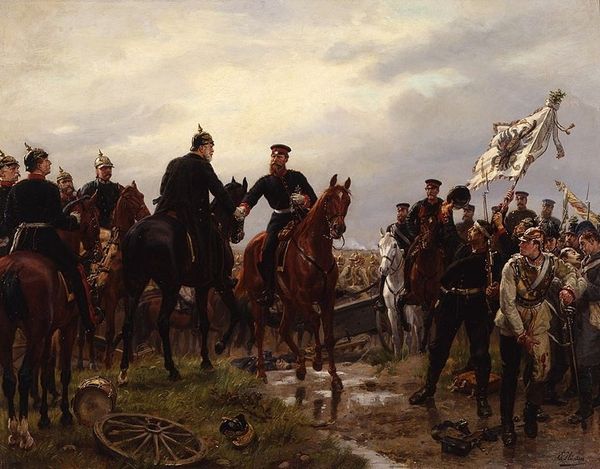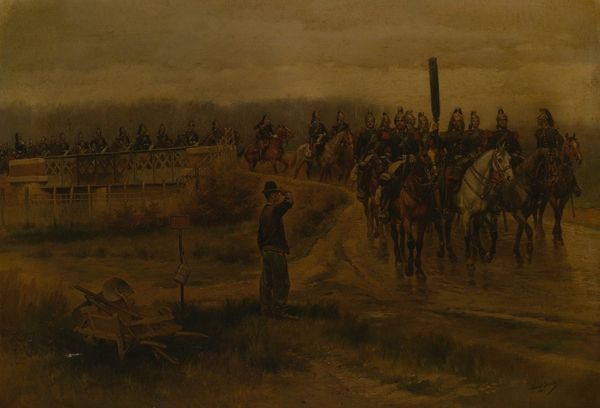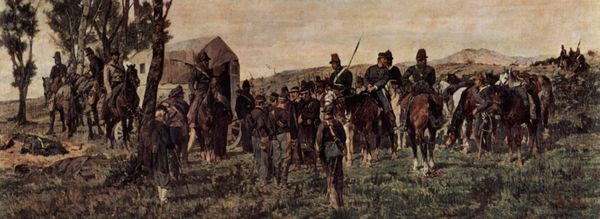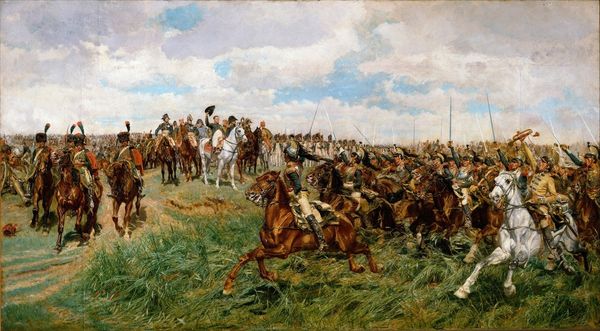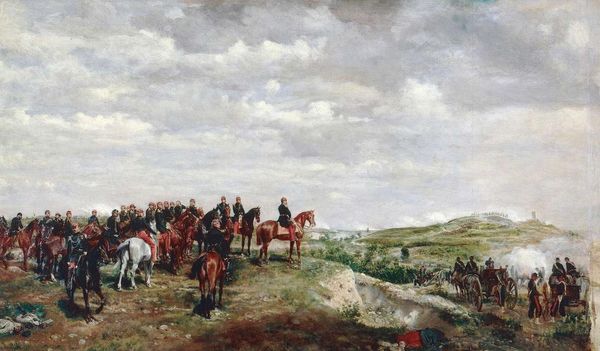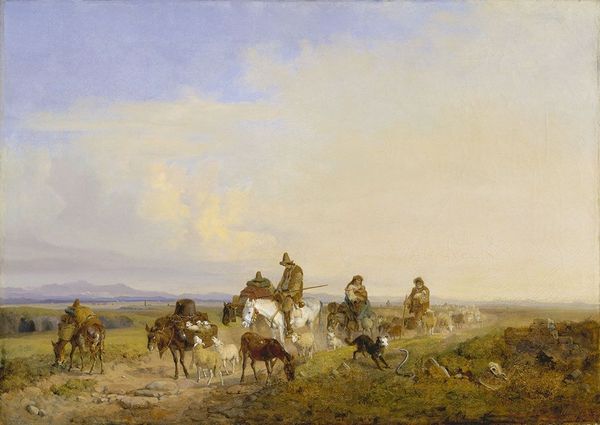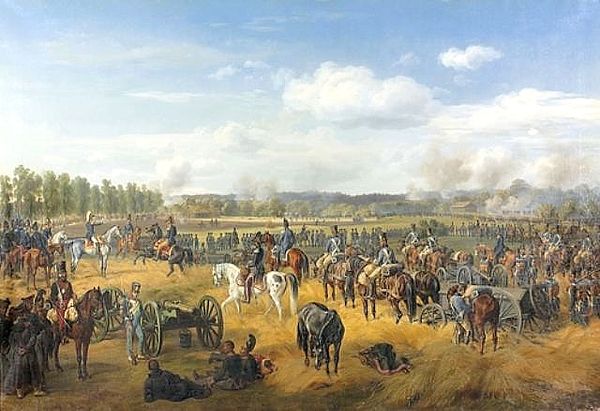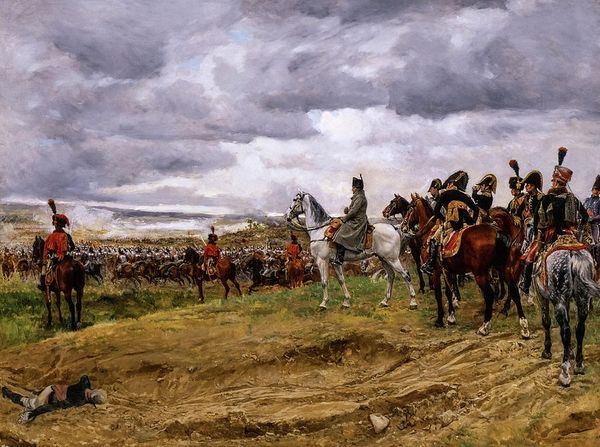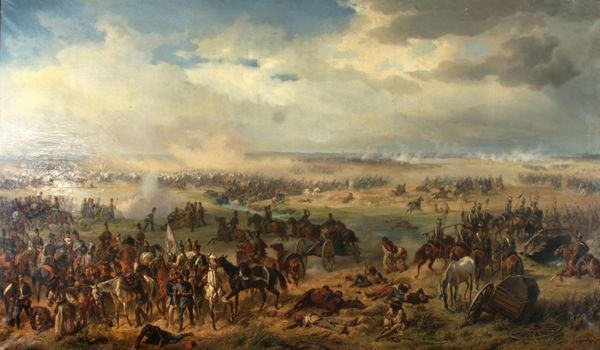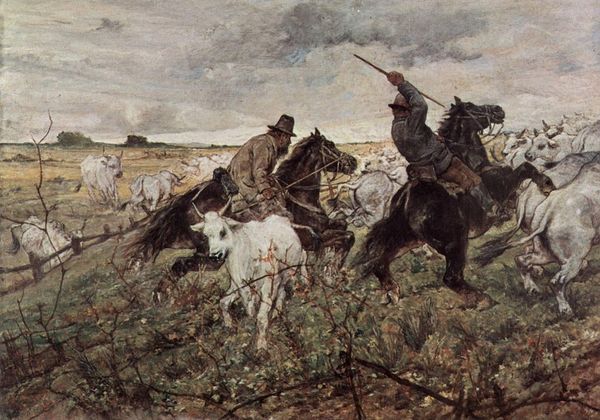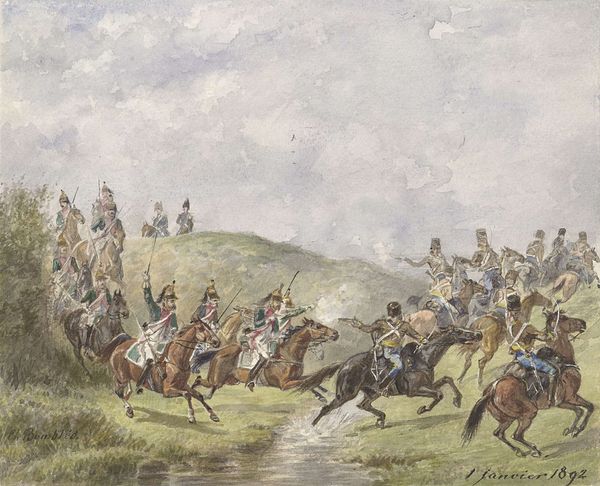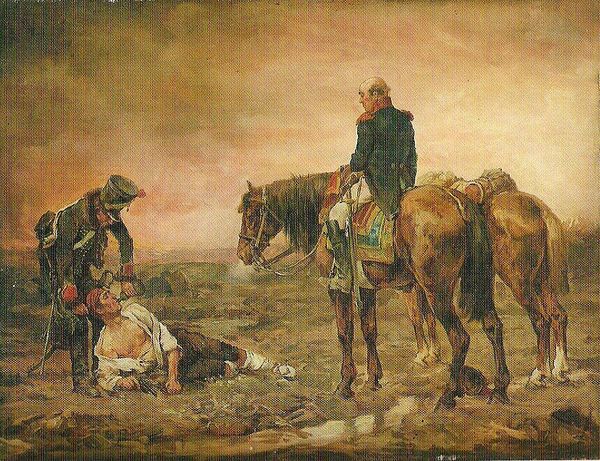
The Italian camp after the Battle of Magenta 1862
0:00
0:00
giovannifattori
Palazzo Pitti, Florence, Italy
Dimensions: 232 x 384 cm
Copyright: Public domain
Editor: This is Giovanni Fattori’s "The Italian Camp after the Battle of Magenta," painted in 1862. It’s rendered in oil paint and gives a glimpse into 19th-century military life. The mood is surprisingly serene considering its subject; there's a certain quiet dignity amid what one imagines was chaotic. What symbolic elements are speaking to you here? Curator: Indeed. Notice how Fattori uses the stark contrast of the white wagon canvas against the dark uniforms, visually weighing suffering and duty. The tall, slender trees punctuating the landscape evoke classical mourning symbols – perhaps mirroring the fragility of life after battle? Editor: That's a striking point. The trees do add a solemn note. It feels like a requiem rather than a victory celebration. Are you suggesting these consciously recall earlier visual traditions? Curator: Absolutely! Consider the wagon itself – almost an altar carrying wounded sacrifices. The figures clustered around it mimic the deposition scenes common in religious art. They evoke compassion. Fattori embeds universal feelings towards the injured even during battle. Look how small the city appears, barely there. Is it worth fighting for if so many end up broken? Editor: I see that connection. So, even within a realist painting like this, there's a layering of symbolism pointing to larger historical and cultural memory. Is there continuity that extends into modern works that focus on wartime suffering? Curator: Undeniably! The image connects back to classic themes of sacrifice while simultaneously foreshadowing later anti-war sentiments in art and photography. The echoes resonate through time. The symbol of resilience through mourning – has always held our imagination as viewers and members of a civilization who suffer together. Editor: Fascinating. I hadn’t considered it that way before, viewing its iconic status with such symbolism and emotion at its base. Thank you!
Comments
No comments
Be the first to comment and join the conversation on the ultimate creative platform.
